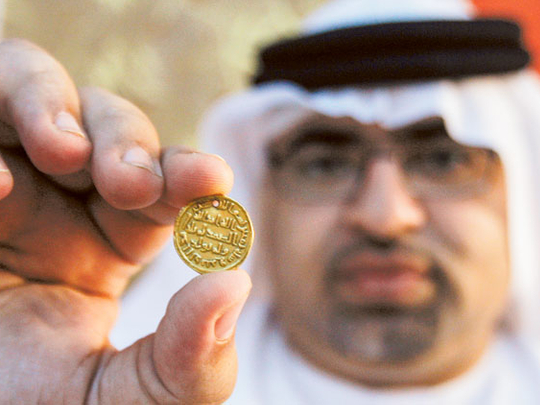
Fujairah: Twenty eight years after discovering the joys of collecting his first coins, it’s anyone’s guess what the future holds for Fujairah resident Saif Nowailah Al Yamahi, 37, and his rare collection of antique coins.
He estimates that almost three decades of hunting for the finest, rarest and most interesting dollars and dirhams have culminated in an unusual collection that he estimates is worth in the neighbourhood of Dh9.7 million.
Ironically, though, his growing pile of money is really not about the money.
It’s all about finding that rarest of specimens, or the super coin that will complete many of the facets of his glittering pursuit.
“In my childhood, I used to subscribe to the children’s magazine ‘Majid’ and from my reading and following some of the hobbies and interests it, I was inspired to start collecting stamps, at first, because they had more colour and decorative features. Then I switched to collecting coins and paper currencies and I soon realised that it was not just a passing phase but something I had a real interest in. I found that I was not collecting stamps and coins for their financial worth but was more interested in their historic and archaeological worth,” Al Yamahi said in an interview with Gulf News.
After years of searching, Al Yamahi is popularly known among his friendsas a dedicated collector and whenever someone stumbles across a new or different coin, a call is usually placed to Al Yamahi announcing yet another gift for the collection.
“I obtained my collection through various ways: exchange with other collectors, friends travelling to foreign countries, buying from antique markets, various exhibitions, public auctions and the internet. Currency collecting can be a very hard thing to do and, at times, I’m forced to travel to other countries to buy and collect the currencies I want even though this costs a lot of mmoneyand effort,” he said
Part of the fascination lies in tracing the history of his home country through the different currencies that went into and out of circulation as well as the currencies of the foreign countries.
He specialised in currencies which have been used by people who lived in this land ever since the Greek period, and right through the Islamic, Persian and Ottoman periods until the British rule which used the Indian rupee; the last foreign currency used before local emirates began issuing their own independent currencies as a precursor for the UAE’s current currency.
The long and storied history of the UAE is marked by a dizzying array of currencies over the years.
“The oldest currency I have collected is the Greek drachmas, then comes the Islamic dirhams and dinars, the Maria Theresa Thaler, A.K.A Austrian riyal, Ottoman riyal, Persian shahi and dinar, Burgashia paisa (named after a Sultan of Oman & Zanzibar), Indian rupee (consisting of seven variants) and the Qatar and Dubai riyal. There were also a number of commemorative coinage issues by separate emirates such as Fujairah,” he said.
The oldest and one of the oddest coin and paper currency in his collection includes Chinese coins from 420 BC, a coin of Alexander the Great dating to 330 BC, coins from the Kushan Empire dating to 200 BC, and Greek, Roman and Islamic periods among other things. Perhaps the most peculiar currency he has is the ‘Taweylat Al-Hassa” or “Larin” which are bent bars of Gold, silver and copper issued in Persia and used as currency in the Gulf region in the 17th and 18th centuries. The highest single denomination he has is a banknote of 50 billion from the former Yugoslavia.
“I have estimated that I spent about one million dirhams. It’s not just the purchase value of the coins and other currencies; other costs include the travel and archiving among other things. The market value of my collection is about Dh9.7 million, but I don’t look at my collection as a commercial investment for the future because I don’t buy to sell but to acquire what I don’t have”, Al Yamahi said. d
Currently, he‘s trying to expand his collection of Islamic period coinswhich are high in demand and expensive.
“I have a good Islamic collection right now but I’m still a beginner compared to some other specialist collectors in the region. In one auction I spent Dh70.000 to get an Islamic collection of 29 gold coins.” Al Yamahi said.
Through the past period he organised seven exhibitions displaying his unique, old and contemporary coins and currency papers.










